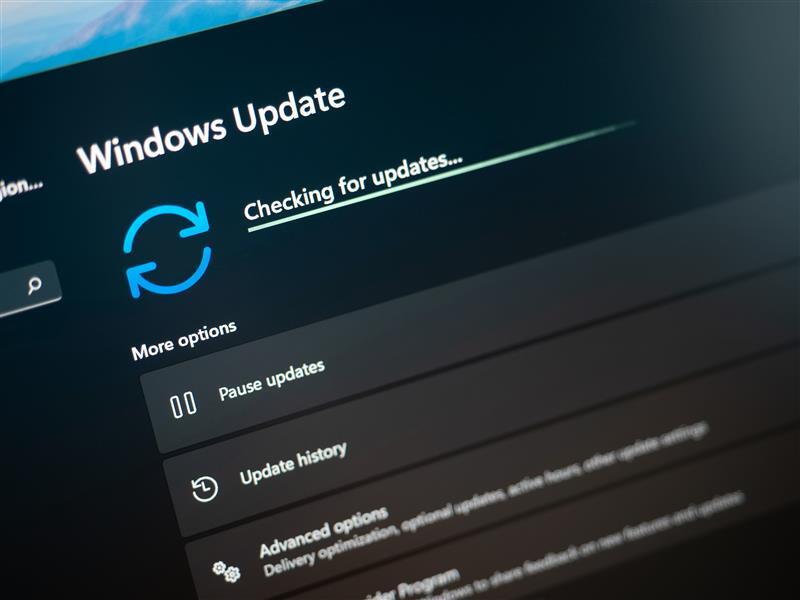Experiencing a Cybersecurity Incident? Get Help Now. | Abacus Group and Medicus IT have merged. Learn more.
Experiencing a Cybersecurity Incident? Get Help Now.
Abacus Group and Medicus IT have merged. Learn more.
Experiencing a Cybersecurity Incident? Get Help Now. | Abacus Group and Medicus IT have merged. Learn more.
Experiencing a Cybersecurity Incident? Get Help Now.
Abacus Group and Medicus IT have merged. Learn more.

The deadline for switching devices to the new Windows 11 operating system (OS) is fast approaching. As referenced in our previous blog, “Transitioning to Windows 11 – Why it’s an urgent need for financial services firms today”, organizations that have not migrated all their computers to Windows 11 by October 14, 2025, will find that those devices will no longer receive security updates, patches, bug fixes or assistance after that time.
For firms that have not yet initiated the migration process, the time to start taking action is now. A successful transition requires careful planning well in advance of implementation.
The first step involves conducting a comprehensive audit of the existing device estate to determine which devices are ready for Windows 11, which may require hardware upgrades, and which should be replaced entirely. It is equally important to identify devices needing manual intervention, particularly those belonging to senior decision-makers whose downtime could impact business continuity.
Inevitably, there are risks with any migration process, but these should never be allowed to delay the transition. Usually, the biggest risk is a failed upgrade. Although uncommon, this may result in a device being unavailable for a long time while it is addressed.
Careful planning can help to reduce the chances of this happening. Compatibility needs to be checked meticulously to avoid unnecessary disruption. If Group Policy is heavily used, it should be reviewed to ensure policies still apply as expected to Windows 11. Legacy applications should also be tested to ensure they can still be used effectively or an alternative identified. If deprecated group policies are being used, these would need to be replaced. But it may be a better option to leverage Intune and Entra to enforce security controls.
There are also some challenges that are unique to financial services firms that need to be taken into account. Typically, these relate to personnel. Operational continuity is mission-critical for many financial services firms. Traders, for example, often have very little time to free up their device, so this needs to be incorporated into the plan for a firmwide upgrade. Implementing a ‘white glove’ migration approach, where devices are swapped outside trading hours with immediate technical support available, reduces downtime risks.
Historical concerns around application compatibility have decreased significantly. IT teams can provide access to legacy applications via Windows 11 if required to do so using solutions such as streaming applications. However, thorough testing and optimization before the broader rollout remain crucial.
Ensuring employees are prepared for the transition is as important as addressing technical issues. Clear communication on timelines, expectations, and any potential disruption helps minimize resistance.
While Windows 11 builds on Windows 10, there are some differences which may cause frustration for some users. The redesigned interface (e.g., new Start Menu and Snap Layouts), productivity tools, and enhanced security features may require some training. Onboarding kits and training resources from Microsoft can help ensure a smooth adaptation to the changes.
From a security perspective, it is reassuring that no mandatory configurations are required as part of the Windows 11 upgrade. The new operating system introduces several features, including updated security baselines, new Group Policy settings, personal data encryption, and stricter file security measures. These updates may require post-migration configuration to align with your organization's policies; therefore, an assessment of existing policies and testing is advised if there are concerns. However, upgrading from Windows 10 is considered low risk, and it is unlikely you will be any less secure.
Taking all of the above into account, the timeframe for completing the transition to Windows 11 will ultimately depend on the migration methodology selected and the volume of devices involved.
Typically, in-place upgrades have a success rate of about 80% and can take as little as 20-30 minutes per machine, but it is advisable to allocate a couple of hours of downtime for each piece of equipment. Hardware changes will need longer. If possible, leveraging remote agents can drastically speed up large scale upgrades.
At Abacus Group, our Professional Services team specializes in planning, managing and delivering upgrade projects tailored specifically to financial firms. By leveraging automation and expert project management, we support firms through every stage of the transition - from initial device audits and readiness assessments to deployment, configuration and ongoing assistance.
Our experts ensure minimal operational disruption while efficiently migrating your systems to Windows 11, implementing best practices to maintain security and compliance throughout the process, optimizing system performance and addressing any issues that may arise during or after the transition. Time is short, and proactive preparation is essential. Reach out to us today to discuss how we can ensure a smooth, secure, and timely migration to Windows 11.
These Stories on Blog